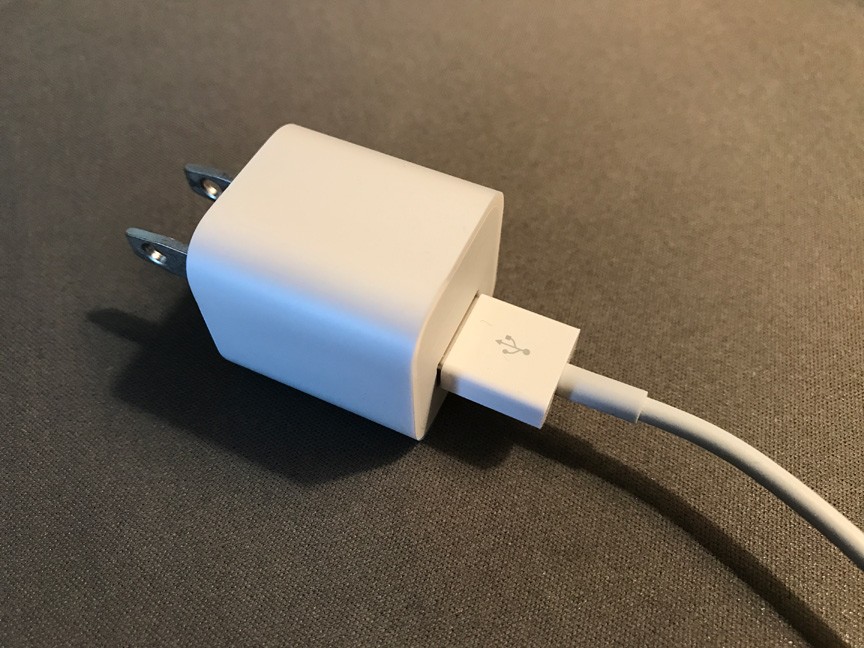Experiencing the dreaded “Not Charging” message on your iPad can be incredibly frustrating. You plug in your device, expecting it to power up, only to be met with this unwelcome notification. Before you panic, know that this issue is often solvable with a bit of troubleshooting. This guide will walk you through the common reasons why your iPad might display “Not Charging” and provide step-by-step solutions to get you back on track.
One of the most frequent culprits behind the “Not Charging” message is simply insufficient power. iPads require more power to charge compared to iPhones, and using the wrong charger can lead to this issue.
The standard iPhone charger, typically a 5W charger, often doesn’t provide enough wattage to charge an iPad effectively, especially while it’s in use or has a low battery level. While it might charge very slowly when the iPad is turned off or in sleep mode, it will often display “Not Charging” when the device is active.
Solution: Always use the official iPad charger that came with your device, or a charger specifically designed for iPads. These chargers are usually 10W or 12W and provide the necessary power for efficient charging. You can identify your iPad charger by looking at the wattage printed on the charger itself, often in small print.
Another common reason for charging problems lies in the charging cable and adapter. Over time, cables can become frayed, damaged internally, or simply wear out. Similarly, the adapter itself might malfunction.
Solutions:
- Inspect your charging cable and adapter for any signs of damage. Look for fraying, bends, or exposed wires on the cable. Check the adapter for any cracks or loose parts.
- Try a different Apple-certified USB cable and power adapter. If you have another iPad or iPhone charger available (ensure it’s an iPad charger for optimal results), try using those to see if the issue persists. This will help you determine if the problem lies with your cable or adapter.
- Test your cable and adapter with another device. If possible, try using your cable and adapter to charge another iPad or iPhone. If the other device also experiences charging issues, it’s likely that your cable or adapter is faulty and needs to be replaced.
A dirty or damaged charging port on your iPad can also prevent proper charging. Lint, dust, and debris can accumulate in the port, obstructing the connection between the charger and your iPad.
Solutions:
- Visually inspect the charging port for any debris. Use a flashlight to get a better look inside.
- Clean the charging port carefully. Use a can of compressed air to gently blow out any loose debris. You can also use a soft, dry toothbrush or a non-static brush to carefully remove any lint or dirt. Avoid using any liquids or sharp objects that could damage the port.
- Check for any damage to the charging port. Look for bent pins or any signs of physical damage. If the port appears damaged, you may need to seek professional repair.
Sometimes, the “Not Charging” message can be triggered by minor software glitches. A simple restart can often resolve these temporary software issues.
Solution:
- Restart your iPad. Press and hold the power button until the power off slider appears. Slide to power off your iPad. After a few seconds, press and hold the power button again until the Apple logo appears.
- Force restart your iPad. If your iPad is unresponsive, you can try a force restart. Quickly press and release the volume up button, quickly press and release the volume down button, then press and hold the power button until the Apple logo appears.
If you’ve tried all the above steps and your iPad still displays “Not Charging,” the issue might be related to battery health or a more serious hardware problem. Like all batteries, iPad batteries degrade over time and with usage.
Solutions:
- Check Battery Health (if applicable). While iPads don’t have a built-in battery health feature like iPhones, you can use third-party apps or diagnostic tools to assess battery health.
- Consider the age of your iPad. If your iPad is several years old and you’ve used it heavily, battery degradation could be contributing to charging issues.
- Contact Apple Support or an authorized service provider. If you suspect a hardware problem or battery issue, it’s best to seek professional help. Apple Support or an authorized service provider can diagnose the issue accurately and provide repair options.
In conclusion, encountering the “Not Charging” message on your iPad can be concerning, but often the cause is something simple like using the wrong charger or a minor obstruction in the charging port. By systematically troubleshooting through these common causes, you can often identify and resolve the issue yourself. Remember to always use the correct iPad charger, inspect your charging accessories, keep your charging port clean, and restart your device. If the problem persists, don’t hesitate to seek professional assistance from Apple Support to ensure your iPad is functioning correctly.

